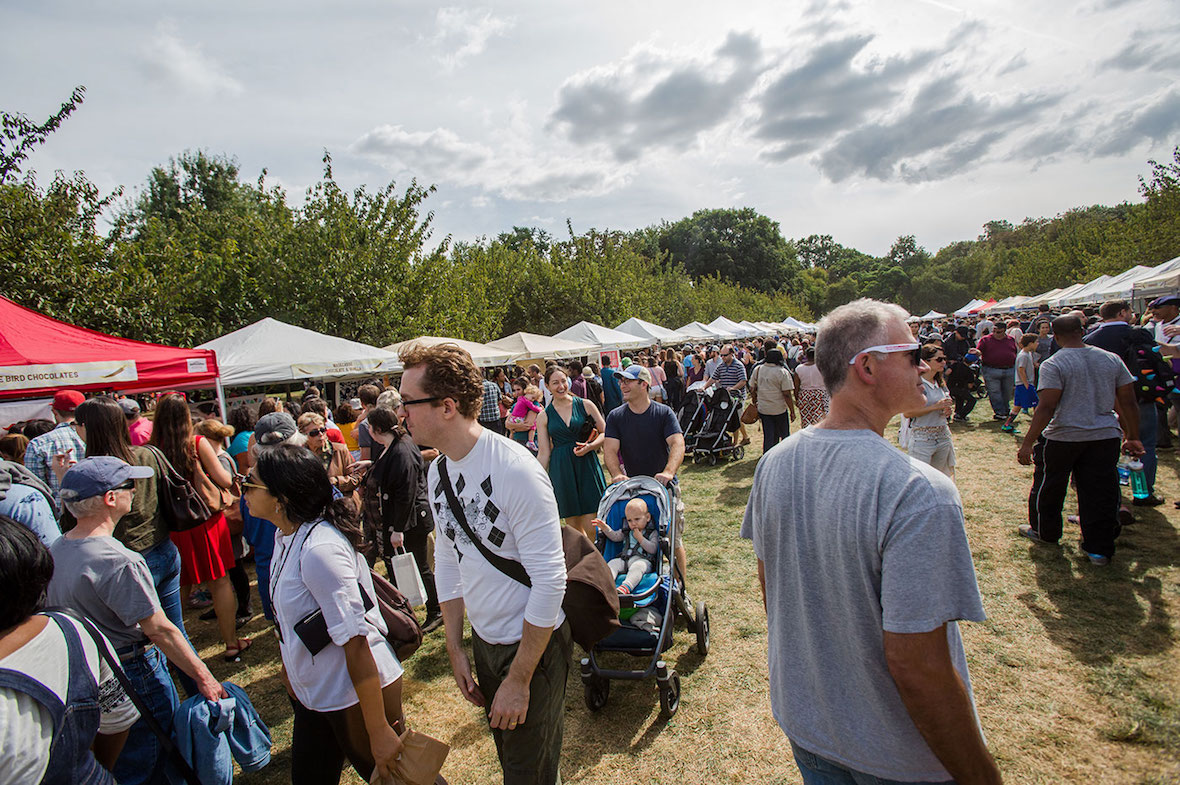Walking into Anita Jacobs’s office at the Brooklyn Botanic Garden, you immediately see why the annual Chile Pepper Festival is so important to her. Her walls are littered with posters of the festival and plastic chile peppers; she’s even wearing a chile pepper necklace she found in chile-obsessed Basque country during a trip this summer. “It’s one of those great things when your hobbies and your job collide.” Jacobs, the director of public programs at BBG, has combined her love of travel, cooking, gardening and, most importantly, spicy foods in her 15 years of planning this highly anticipated festival.
Since 2001, the Chile Pepper Festival has grown from having no vendors to over 60, that are mostly Brooklyn locals. When Jacobs first took over the event, it was important to her to separate the event from traditional tasting events, designed for attendees to get as many samples as possible, or other hot sauce and spicy food events that are more about how much heat one could stand. “There are thousands of places in the world that utilize chile peppers. I’m a little more interested in showcasing their flavor profiles and culture as opposed to heat,” says Jacobs. She’s most proud of the mom-and-pop nature of the event, and that it’s the type of place that can support businesses like Guyana, their first ever vendor, go from from making hot sauce in their bathtub with peppers grown in their backyard to building a company.
Those who might regularly experience difficulty in finding certain spices or ingredients for family recipes elsewhere are often able to find them at the festival.
That same model is one that the majority of the festival’s vendors have followed, especially as Brooklyn has become an international epicenter for artisanal food products. Each year, the vendors find new ways to up their game, creating products exclusive to the festival or debuting new products to solicit feedback from attendees. The theme of the festival is more rooted in community than spice. The folks representing each brand or company are the creators of the product—a requirement of the festival—to make sure the visitor experience leans more toward storytelling than financial transaction.
The number of vendors grows each year, and it’s been especially interesting for organizers to see how the festival has become a popular event for the garden’s neighboring Caribbean communities who have a tradition of using chile peppers. “We get a lot of people who are super passionate about the recipes of specialty items they have from relatives,” Jacobs says. Those who might regularly experience difficulty in finding certain spices or ingredients for family recipes elsewhere are often able to find them at the festival.
This year, the connection of culture and community will go one step further with the addition of a Middle Eastern Souk: a spice market curated by Charlie Sahadi and his children Christine and Ron, who have recently taken over the family grocery store on Atlantic Avenue. The family has been a fixture in the Brooklyn food community for more than 50 years and now they’re helping to create an immersive experience within a festival that highlights many cultures and cuisines.
Tickets are still on sale for the event this Saturday, October 1. See here for more info about the performers and vendors.



